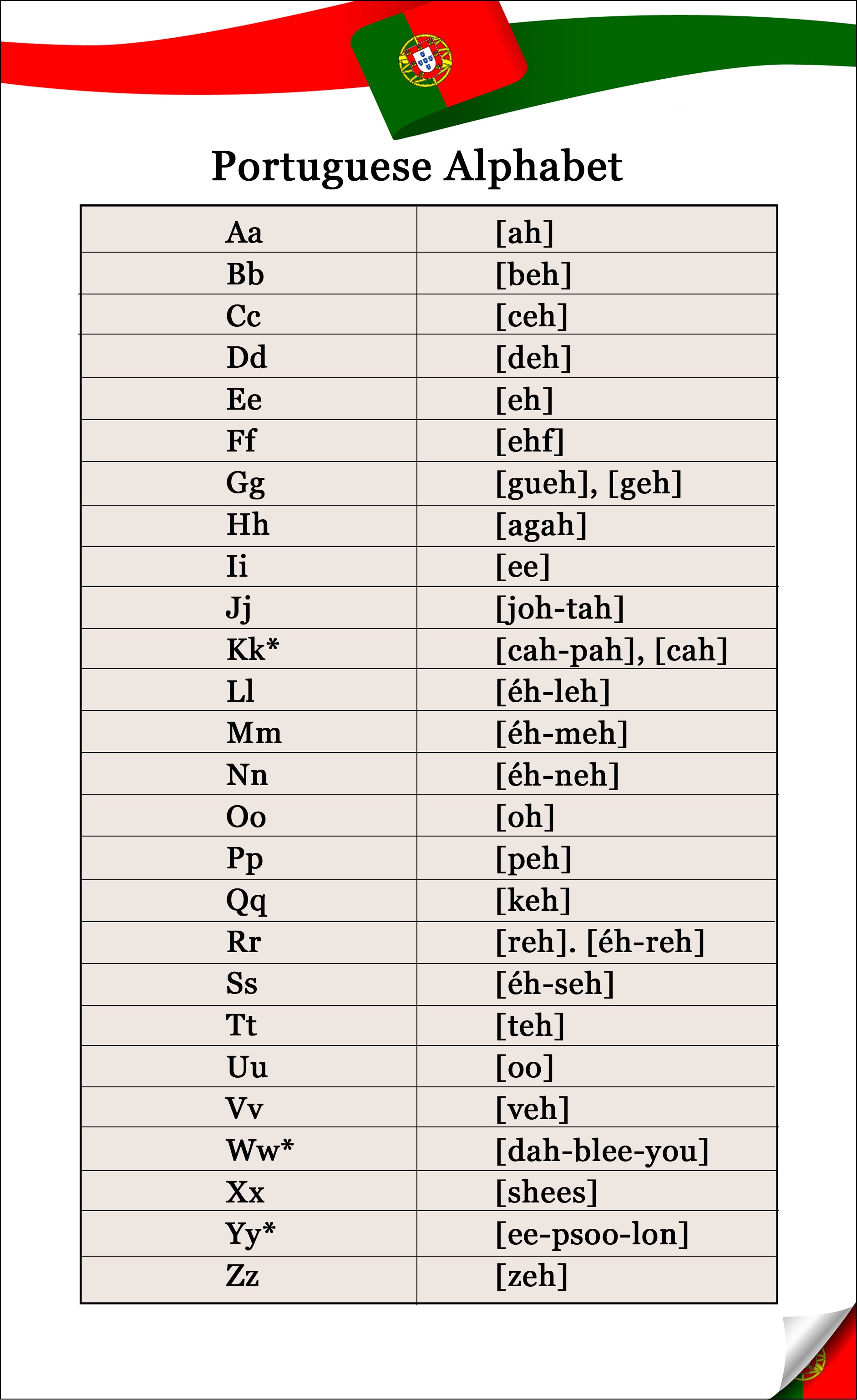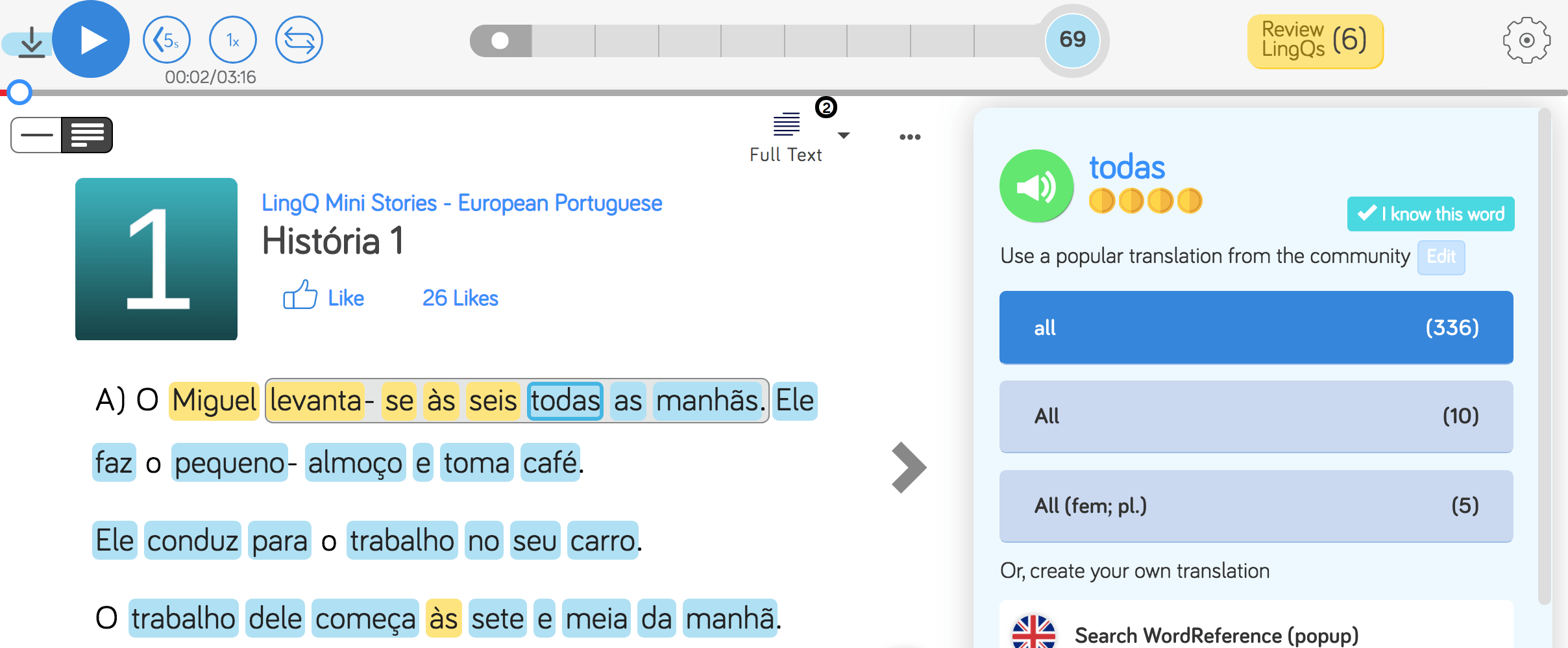The Portuguese Alphabet
In the same way that a house is composed of walls and each wall is built with bricks, a language is composed of words and those words are built with letters.
That’s why the alphabet, along with the numbers, is one of the first things babies learn; those letters will later help them to form words, understand the structure of their mother tongue and communicate with others.
That means when you are beginning to learn any language, getting to know its alphabet is very important. Portuguese is no exception.
The Alphabet Represents The Language
Take a look at this letter: ñ. Doesn’t the Spanish language or even a specific Spanish word come to mind? What about this one: ß? It’s impossible to see the eszett letter without relating it to the German language, right?
Did you know that the same happens with Portuguese? For example, have you ever seen the letter ç? Despite being used in other Latin languages, like French and Catalan, it is a widely used letter in Portuguese.
The Portuguese Alphabet with Pronunciation
Let’s learn the Portuguese alphabet and the sound each of its 26 letters makes. The list below shows the upper and lower case letters and their pronunciation. If you see two different pronunciations, it’s due to the difference between European and Brazilian Portuguese.

*Despite being part of the Portuguese alphabet, the letters K, W and Y are rarely used. You will mostly see them in proper nouns, such as the names of people and places, and in estrangeirismos, which are words from different languages that Portuguese has adopted.
Digraphs
Another particularity of the Portuguese language is the use of digraphs, which are pairs of letters that form a different sound. Here are the most common ones:
– CH – It has the same sound as in the word machine and it can be used with any of the five Portuguese vowels.
Examples: chave (key), cheiro (smell), mochila (backpack), cachorro (dog), chuva (rain).
– RR – It has the sound of the letter H in the word help. The same word can have different meanings if written with one or two letters R (caro means expensive, but carro means car).
Examples: guerra (war), correr (run), garrafa (bottle), horror (horror), correto (correct).
– LH – It has the sound of the letters LL in the word million and it can be used with any vowel.
Examples: abelha (bee), colher (spoon), escolhido (chosen), trabalho (work), silhueta (silhouette).
– NH – It has the sound of the Spanish letter ñ or like the letters NY in the word canyon.
Examples: ninho (nest), sonho (dream), amanhã (tomorrow), cozinheiro (chef), nenhum (none).
Learn Portuguese Faster Using LingQ
Immersing yourself in Portuguese doesn’t require you to travel abroad or sign up for an expensive language program.
However, it can be a bit tiresome to find interesting content, go back and forth between sites, use different dictionaries to look up words, and so on.
That’s why there’s LingQ. LingQ is the best way to learn Portuguese online because it lets you learn from content you enjoy!

You can import videos, podcasts, and much more and turn them into interactive lessons.
Keep all your favourite Portuguese content stored in one place, easily look up new words, save vocabulary, and review. Check out our guide to importing content into LingQ for more information.
LingQ is available for desktop as well as Android and iOS. Gain access to thousands of hours of audio and transcripts and begin your journey to fluency today.
***
Ivy do Carmo is a Brazilian content writer and translator whose passion has always been learning and teaching the English language.


